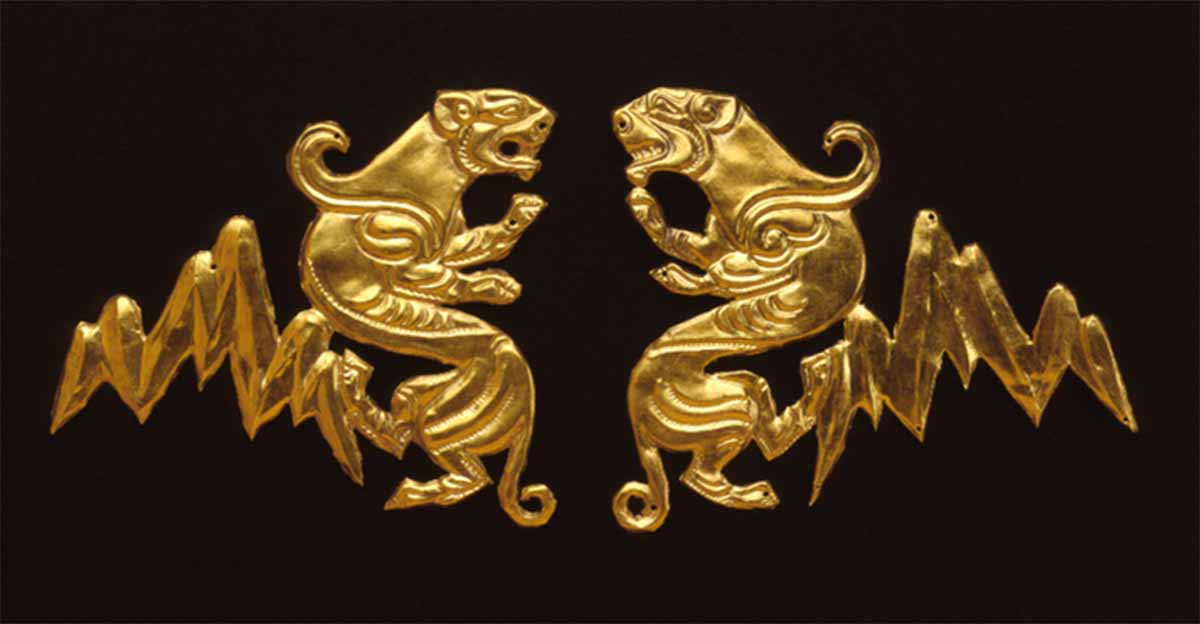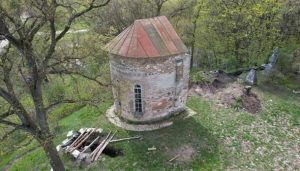Treasures from Ukraine Returned, but Cultural Heritage Is Destroyed by the Current War

Ukraine is celebrating the repatriation of Scythian gold treasures, marking a “symbolic and historic” triumph over Russia in a prolonged dispute over ownership. The artifacts, including a rare golden neck ornament and a solid gold helmet, were unveiled in Kyiv on Tuesday. This collection, Ukraine’s treasures, comprising 1,000 items, had been loaned by four museums in Crimea for an exhibition in the Netherlands in 2013.
Ukraine Treasures: Dutch Court Decree Causes Rightful Return
As the artifacts remained abroad, Russia annexed the Black Sea peninsula. Both Ukraine and museums in Moscow-occupied territory subsequently laid competing claims for the Scythian finds. After a protracted legal battle, the Dutch Supreme Court ruled in June that the items rightfully belonged to Ukraine.
“We returned home not just valuables that were taken out of Crimea in 2013, but a part of our history,” said Vasyl Malyuk, the head of Ukraine’s SBU intelligence agency, which coordinated the shipment, as quoted by The Guardian. “For us, as well as for our country in general, this case is symbolic. It shows that Ukraine never gives up what belongs to it by law.”
Taking heed of the court’s decision, the Allard Pierson Museum in Amsterdam retrieved the artifacts from storage and transported them to Kyiv in a truck. The long-awaited return culminated on Sunday when the treasures arrived at the Pechersk Lavra monastery in the Ukrainian capital.
“This was a special case, in which cultural heritage became a victim of geopolitical developments,” said Els van der Plas, the director of the Allard Pierson, in a statement posted by the museum, quoted by Art News. “After it became clear in 2014 that the judge would consider the case, we focused on safely storing the artifacts until the time came to return them to their rightful owner. We are pleased that clarity has emerged and that they have now been returned.”

Ukraine’s treasures were brought home, artifacts of Scythian gold, dating back to the 4th century BC. (Free Art Licence)
The National Museum has confirmed the safe arrival of 565 items from Amsterdam, comprising ancient sculptures, Scythian and Sarmatian jewelry, and Chinese lacquer boxes. This valuable collection is set to remain at the museum, awaiting the liberation of Crimea.

The regional children’s library, a Ukraine treasure, was once the Vasyl Tarnovsky Museum of Ukrainian Antiquities. Image of the aftermath of bombing. (Viacheslav Skorokhod/ Antiquity)
Archaeological Destruction: War on Cultural Heritage
Archaeologists are currently undertaking the inaugural on-the-ground survey of Ukraine’s archaeological sites since the invasion in February 2022. The findings illuminate a staggering extent of damage to Ukraine’s cultural heritage, reminiscent of the destruction witnessed during the Second World War.
A recently published paper in the journal Antiquity reveals the distressing impact of the war, citing damage to thousands of archaeological sites, including previously unrecorded ones. Among the casualties are at least one UNESCO-listed site and several locations dating back approximately a thousand years. The paper sheds light on the urgent need for concerted efforts to mitigate the ongoing threat to archaeological treasures in the region.

The Princely Barrow at Boldyni Hoy, dating from the 10th-11th century AD, shows signs of damage resulting from a rocket strike. (Serhii Tarabarov/ Antiquity)
The destruction resulting from the ongoing conflict extends to subterranean heritage, with explosions and trench digging taking a toll on archaeological sites. Among the casualties is Boldyni Hory, a significant 11th-century necropolis, now facing irreparable damage. Notably, the UNESCO-listed site includes a children’s library, formerly the Vasyl Tarnovsky Museum of Ukrainian Antiquities. UNESCO maintains a list of 331 sites believed to have suffered damage.

The standing remnants of an 11th-century chapel reveal the remains of a bunker and trench, exposing the excavation through the foundations of the buildings. (Archaeological Landscapes Monitoring Group/Antiquity)
Academics highlight the severe impact on hillforts near Kyiv, with major damage reported. Numerous churches and structures, some dating back 900 to 1,000 years, have been affected. Tragically, the destruction of historical buildings often coincides with the loss of human life, as these places, such as theaters and churches, continue to serve as cultural and social hubs. The ongoing devastation underscores the urgent need for efforts to protect and preserve Ukraine’s rich historical and cultural heritage.
The invasion has not only brought about the tragic loss of human lives and the displacement of numerous Ukrainians but also witnessed a deliberate campaign targeting cultural heritage, aimed at erasing public history and memory, posing a profound threat to Ukraine’s rich historical legacy.